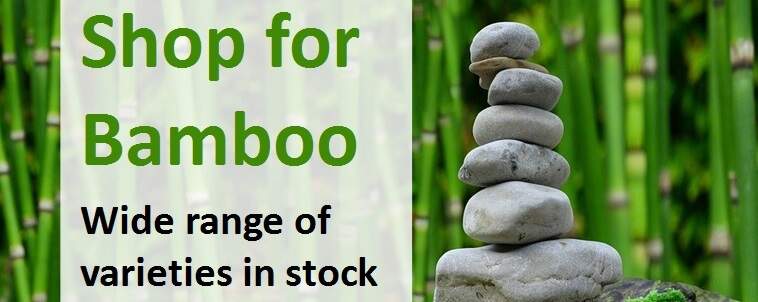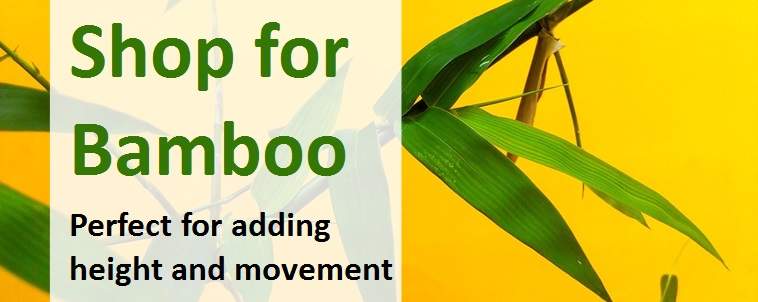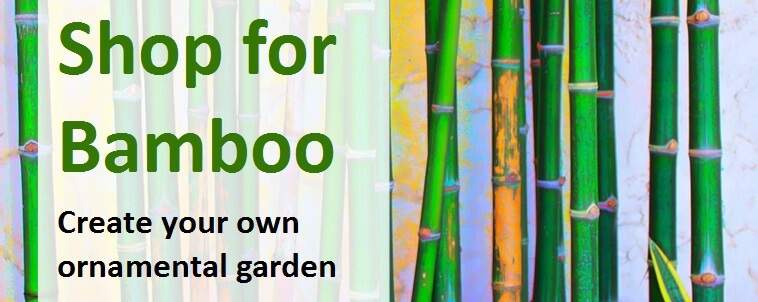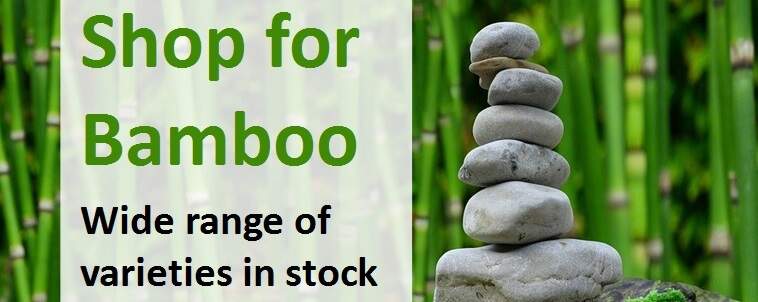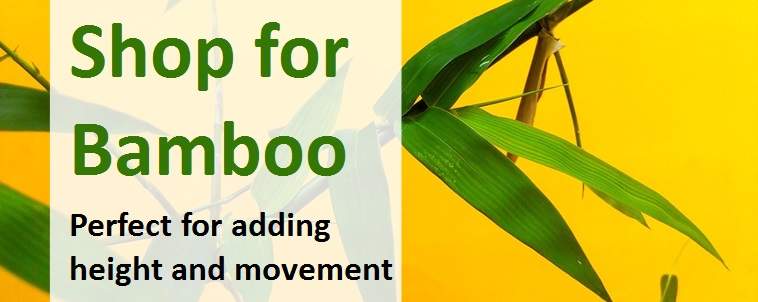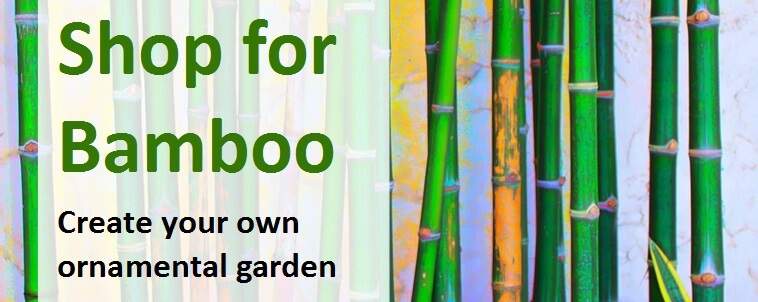Guide to Bamboo Plants
Bamboos are valuable ornamental plants with attractive, lush evergreen foliage that can be used to add a tropical effect, style, movement and panache to any garden. Easy to grow and fully hardy, they come in almost 10,000 varieties ranging from huge tropicals to tiny dwarfs, and have become increasingly popular and fashionable over recent years for a variety of settings. With a few hundred varieties being suitable for the British climate, they are ideal for using as focal points, adding structure, height and movement to your borders or implementing as a windbreak, hedge or screen.
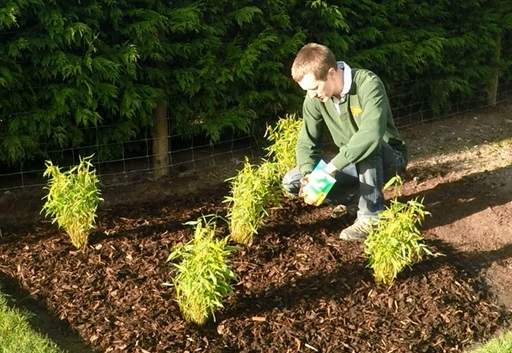
Bamboo in the border
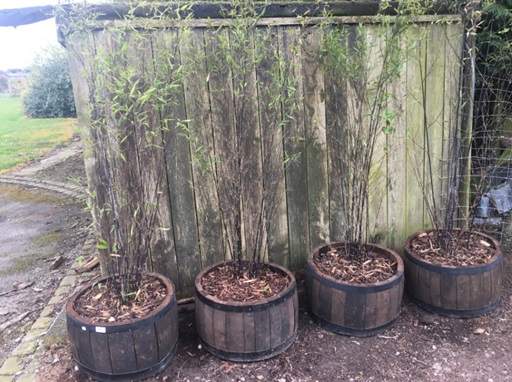
Bamboo as a privacy screen
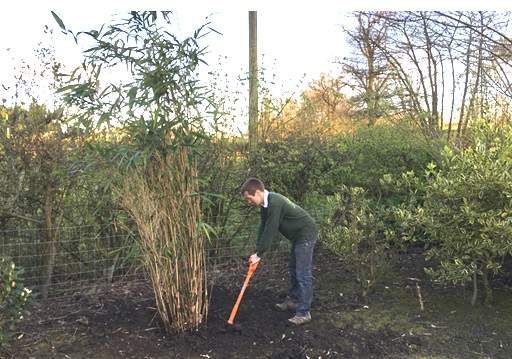
Bamboo used for ascent
As part of the grass family, bamboo plants are native to South East Asia, sub-Sahara Africa, the mid-Atlantic United States and parts of South America, where they are of notable economic and cultural significance acting as a food source, building material and versatile raw material for the indigenous populations. Bamboos have hollow stems which emerge from the ground at their full diameter and grow to their full height in a single growing season of three to four months. During this time, new canes grow vertically without branching; only when most of the mature height is reached do branches extend from the nodes and leaves start to appear. During the following year, the pulpy wall of each cane, or culm, slowly hardens and by the third year the culms are considered fully mature.
Choosing a Bamboo (Clump forming vs. Running Varieties)
It is important to choose a bamboo that is suitable for what you want it to do and appropriate for your situation and size of garden. Bamboos can be divided into clump-forming and running varieties, with both having specific uses and benefits. Running bamboos spread by rhizomes (horizontal underground stems) which help the plant to colonise new areas and may spread aggressively if not contained. Planting instructions and recommended garden care must be followed to ensure running bamboos do not pop up in parts of your garden where they are unwelcome. They are probably not the right choice for small gardens, unless you are reasonably experienced at the necessary containment techniques.
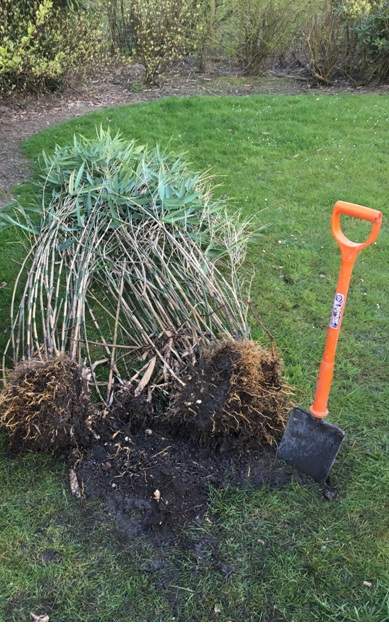
Running bamboos spread via underground rhizomes
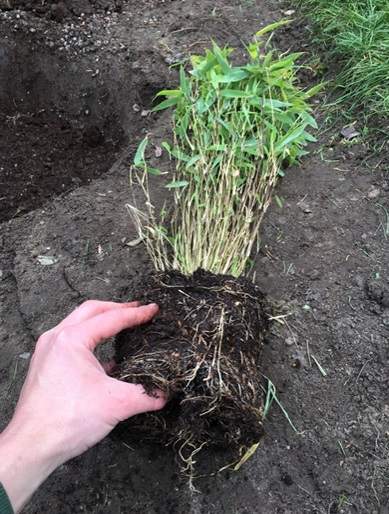
Clump forming bamboos spread much more slowly
Clump-forming bamboos spread slowly because, like ornamental grasses, the growth pattern of the rhizomes is to simply expand the root mass gradually. They work well as big specimen plants in lawns or as mixed border plantings, as well as being easier to keep in containers than running bamboo.
Types of Running Bamboo
Phyllostachys aureosulcata f. spectabilis
Pleioblastus pygmaeus Distichus
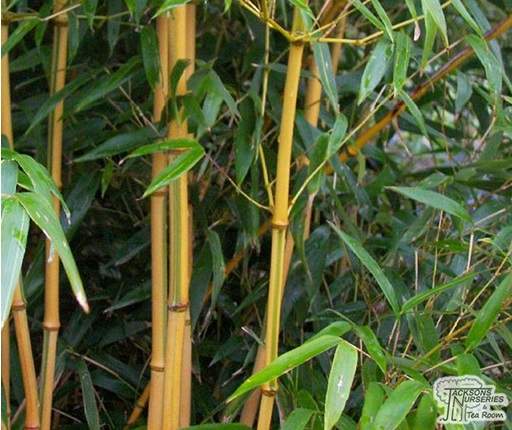
Phyllostachys aureosulcata f. spectabilis
Types of Clump-Forming Bamboo
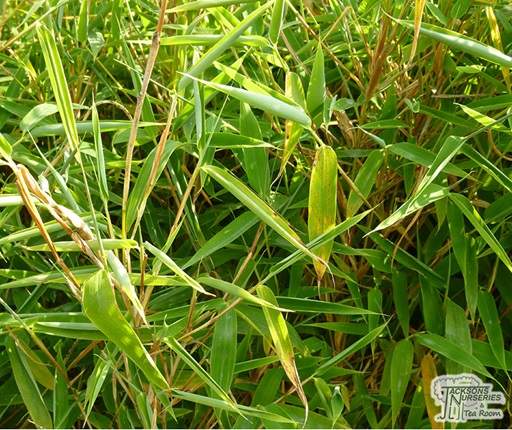
Fargesia murieliar Jumbo
Bamboo Varieties in Focus
Fargesia Bamboo (Clump forming) - smaller, clump-forming bamboos with an upright habit, smaller leaves and thinner stems. Native to woodland areas at high altitudes across Asia, they are shade tolerant and extremely hardy. Growing from 1.5 to 4 metres tall, they also relish full sun and are suitable for growing in containers.
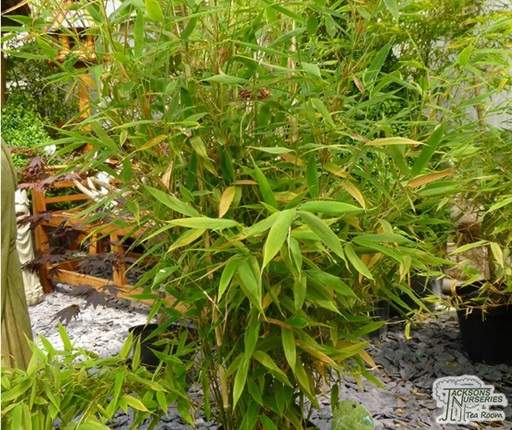
Fargesia murielae Simba
Phyllostachys Bamboo (Running) - tall-growing bamboos which are hardy and unfussy, happy in either full sun or dappled shade. Great as a tropical specimen border plant, their thick highly ornate canes also make them perfect for screening/hedging and cutting to stake and support other plants. With an ultimate height between 3 and 6 metres, Phyllostachys varieties include the popular black bamboo and golden bamboo.
Phyllostachys aureosulcata f. spectabilis
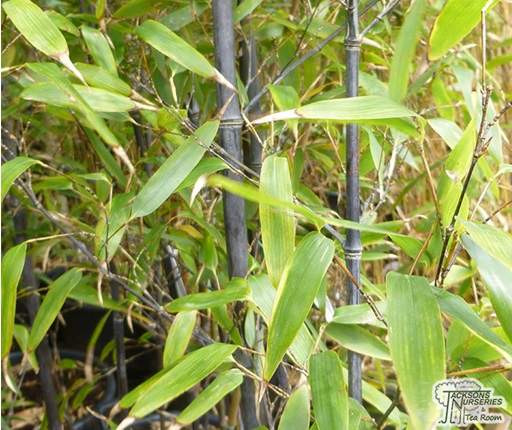
Phyllostachys nigra
Pleioblastus (Running) - a dwarf but spreading bamboo with slender canes bearing several leafy branches at each node. Most have a carpet-forming growth habit, perfect for using as a ground cover plant, in a Japanese themed garden or even for bonsai.
Pleioblastus pygmaeus Distichus
Pleioblastus shibuyanus 'Tsuboi'
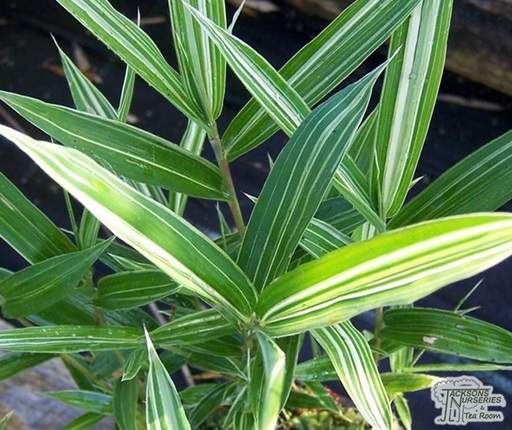
Pleioblastus variegatus
Sasa (Running) - strong, spreading root system that is useful for stabilising banks and slopes or cut back annually and used as a groundcover plant. The variegated Sasa Veitchii has a particularly tropical appearance and tolerates being pruned or trimmed back hard each year.
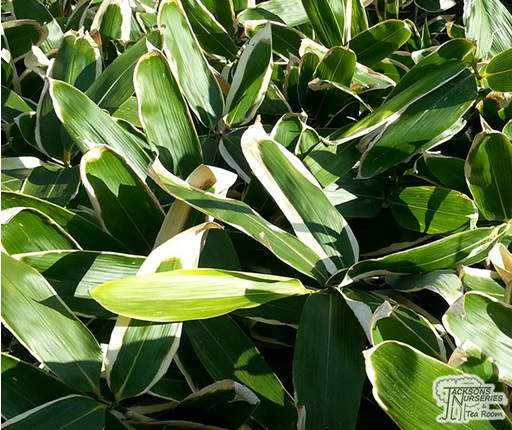
Sasa Veitchii
Use of Bamboo
Small bamboos make ideal container plants grown in a large pot in a loam-based potting compost. It should be borne in mind, particularly for running varieties, that this restriction on their growing environment will necessitate feeding and watering, potentially regularly during the summer depending on the level of precipitation. Running varieties may be grown in larger containers but also need to be divided and repotted at least every couple of years to prevent them from breaking out of their enforced surroundings. We recommend the polished ebony stems and sun-loving habit of Phyllostachys Nigra (RHS AGM) or the arching clumps and leafy canes of Fargesia Murieliae for container growing, especially on a terrace where the rustling and swaying becomes more mesmerising.
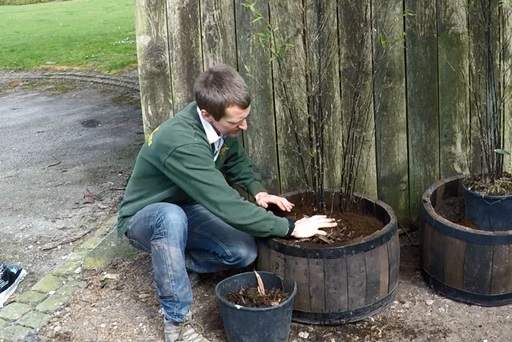
Mulching bamboo grown in a container with bark
Most bamboos, especially running varieties, make a superb windbreak, hedge or screen, to block out your noisy neighbours, hide an unsightly building or simply provide some privacy. Rhizomes can be channelled in a specified direction by sinking concrete slabs or high density polythene either side of the plant. The best one to choose depends on the desired height of hedge, foliage and culm colour you're looking for. Fargesia planted close together form a dense hedge (Fargesia Nitida is particularly effective), whilst Sasa creates a screen with large, tropical looking leaves and Phyllostachys is best for taller screening.
Fargesia are very well-behaved clump-formers growing to a small or medium height, making them ideal for the smaller garden or creating a medium height privacy screen, whilst spreading varieties with their mass of foliage and character can add a tropical, jungle feel to large gardens if left to meander slightly via their underground rhizomes. Taller varieties can also be used as specimen plants in the middle of a lawn or border to create an ornamental focal point.
-
Plant Guides
- Guide to Bamboo Plants
- Guide to Climbing Plants
- Guide to Climbing Roses
- Guide to Conifers
- Guide to Floribunda Roses
- Guide to Fruit Bushes
- Guide to Fruit Trees
- Guide to Garden Ferns
- Guide to Garden Shrubs
- Guide to Heather Plants
- Guide to Hedging Plants
- Guide to Herb Plants
- Guide to Herbaceous Perennials
- Guide to Hybrid Tea Roses
- Guide to Japanese Maple Trees
- Guide to Ornamental Grasses
- Guide to Rhododendrons
- Guide to Topiary
Share this page:

